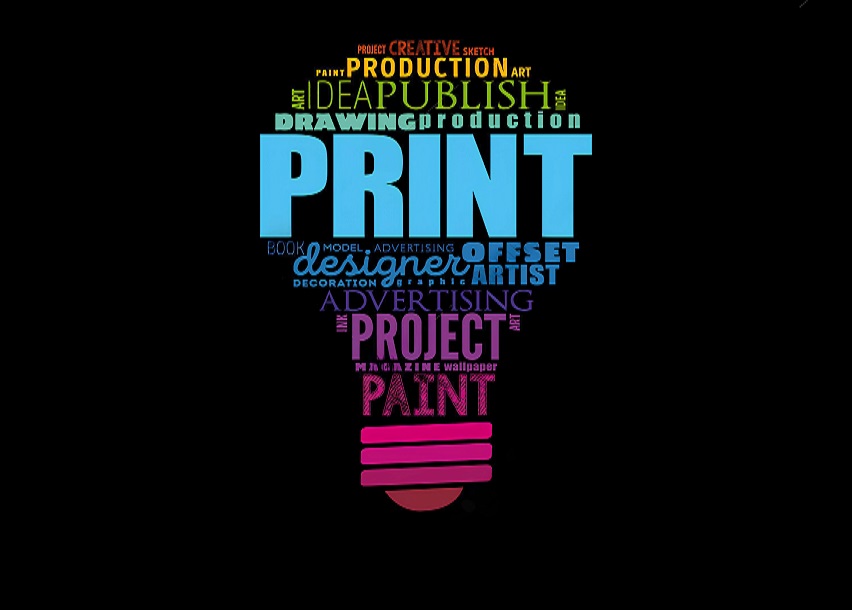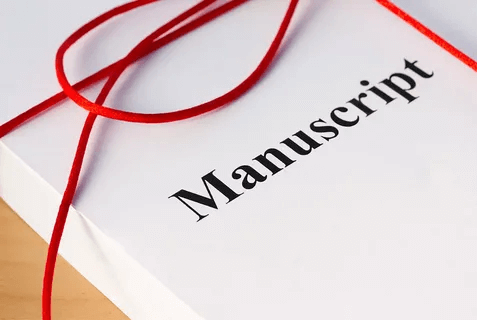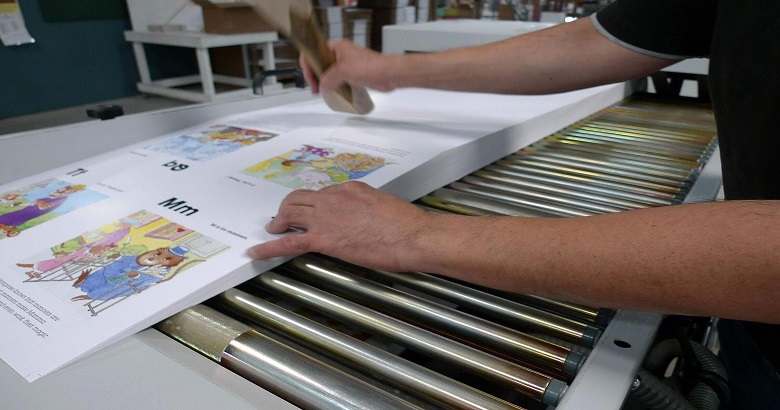Publishing a book is a huge accomplishment and a goal for many aspiring authors. However, the path to seeing your words in print may be difficult, particularly when managing the complexities of the printing process. In the United Kingdom, where the literary environment is vast and diverse, understanding how to have your book printed is critical to success. This thorough blog aims to equip aspiring authors with a complete roadmap for exploring the printing process in the UK, from understanding your options to selecting the proper printing book services partner.
Understanding Your Options: Printing Book Services

When starting the process of bringing your book to life, it’s critical to grasp the wide choice of printing book services available to authors in the UK. Each choice has its own set of benefits and considerations, catering to a variety of needs, interests, and budgets. Here’s a more detailed look at the printing book services available:
Traditional Publishing Houses
Traditional publishing houses have long been the cornerstone of the publishing industry. Partnering with a traditional publisher entails sending your book to established publishing houses that handle various components of the publishing process, such as editing, design, printing, and distribution.
While traditional publishing provides the prestige of connecting with a recognised publishing business and access to established distribution channels, obtaining a publishing contract can be quite competitive. Authors frequently have to seek literary agents or submit directly to publishers; even so, acceptance rates are low. Furthermore, authors can lose some creative control over their work, as publishers frequently make judgments about editing, cover design, and marketing.
Self-Publishing Platforms
Self-publishing has revolutionised the landscape, empowering authors to take control of their publishing journey. Self-publishing platforms allow authors to publish their books independently, overseeing all parts of the publishing process, from editing and design to printing and distribution. Self-publishing platforms give a variety of printing book services, ranging from simple DIY alternatives to full-service packages that include professional editing, cover design, and marketing support.
While self-publishing provides unrivalled creative freedom and control, authors must finance their projects and navigate the intricacies of marketing and distribution. However, self-publishing platforms allow authors to publish their work rapidly and reach a global audience without the limitations that traditional publishing typically imposes.
Print-on-Demand (POD) Services
Print-on-demand (POD) services have emerged as a popular and cost-effective option for authors looking to publish their books with minimal upfront costs. Books are produced on demand (POD), reducing the need for massive print runs and inventory storage. This on-demand printing methodology enables writers to produce and sell their books while avoiding the financial risks of traditional printing.
POD services allow authors to print modest volumes of their works, making them an excellent choice for self-published authors and those who serve niche or specialised markets. Many POD providers also provide distribution alternatives, allowing authors to reach consumers through online retailers like Amazon and Barnes & Noble and brick-and-mortar bookstores through print-on-demand agreements.
Digital Printing Companies
Digital printing companies utilise digital technology to produce high-quality printed materials directly from digital files. This printing technology has quick turnaround times, making it ideal for short print runs and last-minute printing demands.
Many digital firms provide various printing book services, including book printing, binding, and finishing, allowing writers to tailor their books to their needs. While digital printing book services can not be as cost-effective as traditional offset printing for big print runs, they are more flexible and scalable, making them an appealing alternative for authors who want to publish fewer books or create bespoke editions.
Offset Printing Services
Offset printing is a traditional method of printing book services that involves transferring ink from a metal plate to a rubber blanket before being applied to the printing surface. While offset printing has a high initial investment and is best suited for big print runs, it provides greater print quality and cost-effectiveness for high-volume printing operations.
Offset printing book services frequently offer a variety of alternatives for authors, such as paper stocks, binding styles, and finishing methods. Authors who use offset printing services generally receive individual help and guidance throughout printing, ensuring that their books meet the highest quality requirements.
Prepare Your Manuscript for Printing:

Before sending your manuscript to the print marketing services expert, ensure it’s correctly formatted and ready for printing. Here are some important steps to consider:
-
Editing and Proofreading:
Invest in professional editing and proofreading services to ensure your document is error-free and polished. Editing is an important step in the publication process since it guarantees that your book is of good quality and adheres to professional guidelines.
-
Design and layout:
Collaborate with a qualified graphic designer to create a visually appealing cover and internal layout for your book. Pay attention to font, graphics, and general aesthetics to ensure that your book stands out on the shelf and piques the interest of prospective readers.
-
File Preparation:
Prepare your manuscript files by the printer’s standards, which include file format, resolution, and colour mode. Ensure all fonts and pictures are properly embedded to avoid printing problems or conflicts.
Finding a Reliable Printing Partner:

Choosing the right printing book services partner is critical to the success of your book project. Here are some aspects to consider when choosing a printing company:
-
Reputation and Experience:
Look for printing companies with a proven track record of producing high-quality outcomes and providing good customer service. Investigate the printing company’s reputation, study reviews, and get suggestions from other authors or publishing professionals.
-
Printing Capabilities:
Choose a printing firm that provides printing technologies and services that meet your project’s needs. Whether you require offset printing for a large print run or digital printing for on-demand orders, ensure the printer meets your requirements.
-
Pricing and Turnaround Time:
Compare pricing quotes from different printing businesses to verify you’re getting a fair price for your project. Examine turnaround timeframes and delivery choices to guarantee that your books arrive on time.
Customer Support:
Evaluate the printing company’s customer service, including contact channels, responsiveness, and assistance with any queries or concerns you may have during the printing process.
Finally:
Having your book produced in the UK is an exciting step in your publishing journey, but it necessitates careful planning, preparation, and collaboration with the proper printing partner. You may bring your literary vision to life and share your tale with the world by understanding your options, choosing the best printing method, properly preparing your manuscript, and finding a reputable printing company. Embrace the process, stay focused on your goals, and celebrate each step toward becoming a published author. With commitment, perseverance, and the necessary tools, you may make your dream of publishing a book come true in the United Kingdom’s lively and blooming literary landscape.
Frequently Asked Question
-
What is the difference between offset printing and digital printing?
Offset printing involves transferring ink from a metal plate onto a rubber blanket before being applied to the printing surface, making it suitable for large print runs. Digital printing, on the other hand, uses digital files to directly print onto paper or other substrates, making it ideal for short print runs and offering quick turnaround times.
-
How do I choose between traditional publishing and self-publishing?
The decision between traditional and self-publishing depends on your goals, preferences, and resources. Traditional publishing offers access to industry expertise and established distribution channels but can be highly competitive. Self-publishing provides greater creative control and autonomy but requires authors to oversee all aspects of the publishing process.
-
What are the benefits of print-on-demand (POD) services?
Print-on-demand services allow authors to print copies of their books as orders are received, eliminating the need for large print runs or inventory storage. POD offers flexibility, cost-efficiency, and the ability to print small quantities on demand, making it an attractive option for self-published authors.
-
How should I prepare my manuscript for printing?
Before sending your manuscript to the printer, ensure it’s formatted and error-free. Invest in professional editing and proofreading services, work with a graphic designer to create an appealing layout and cover design, and prepare your files according to the printer’s specifications.
-
What factors should I consider when choosing a printing partner?
When selecting a printing company, consider factors such as reputation, experience, printing capabilities, pricing, turnaround times, and customer support. Look for a printing partner with a proven track record of delivering high-quality results and excellent customer service to ensure the success of your book project.



